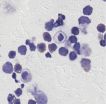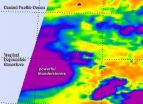(Press-News.org) August 5, 2014 – A major hurdle in gene therapy is the efficient integration of a corrected gene into a patient's genome without mutating off-target sites. In a paper published today in Genome Research, scientists have used CRISPR/Cas genome editing technology to seamlessly and efficiently correct disease-causing mutations in cells from patients with β-thalassemia.
β-thalassemia results from inherited DNA mutations in the hemoglobin beta (HBB) gene, resulting in reduced HBB expression in red blood cells and, in the most severe forms, anemia. The only established curative treatment is hematopoietic stem cell transplantation; however, this treatment requires a matched donor. Gene therapy, which delivers a corrected copy of a gene into patient cells, could bypass the need for a donor. Previous attempts using a virus to randomly insert a normal gene into the genome has been successful in one β-thalassemia patient, but the long-term effect of viral insertion is not yet known.
To correct HBB mutations directly in a patient's genome, researchers first generated induced pluripotent stem cells, or iPSCs, from skin cells of patients. The real breakthrough came when they applied CRISPR/Cas9 to precisely engineer a double strand DNA break at the HBB locus in these cells, allowing a donor plasmid with the corrected sites to be efficiently integrated, thus replacing the mutated sites. The donor plasmid also contained selectable markers to identify cells with corrected copies of the gene. These selectable markers were subsequently removed with transposase and a second round of selection, generating a seamless, corrected version of HBB in the patient's genome.
Importantly, the researchers could differentiate the corrected iPSCs into mature blood cells, and these blood cells showed restored expression of hemoglobin. However, much work is needed before these cells could be transplanted back into a patient for treating β-thalassemia. "Although we and others are able to differentiate iPSCs into blood cell progenitors as well as mature blood cells, the transplantation of the progenitors into mouse models to test them has so far proven very difficult," said senior author Yuet Wai Kan from the University of California, San Francisco. "I believe it will take quite a few more years before we can apply it in a clinical setting."
INFORMATION:
Scientists from the University of California, San Francisco and the Blood Systems Research Institute contributed to this study.
This study was funded by the National Institutes of Health.
Media contacts:
The authors are available for more information by contacting:
Kristen Bole, University Relations, University of California, San Francisco (kristen.bole@ucsf.edu, +1-415-476-2743)
Interested reporters may obtain copies of the manuscript via email from Peggy Calicchia, Administrative Assistant, Genome Research (calicchi@cshl.edu, +1-516-422-4012).
About the article:
The manuscript will be published online ahead of print on 5 August 2014. Its full citation is as follows:
Xie F, Ye L, Chang JC, Beyer AI, Wang J, Muench MO, Kan YW. 2014. Seamless gene correction of β-thalassemia mutations in patient-specific iPSCs using CRISPR/Cas9 and piggyBac. Genome Res doi: 10.1101/gr.173427.114
About Genome Research:
Launched in 1995, Genome Research is an international, continuously published, peer-reviewed journal that focuses on research that provides novel insights into the genome biology of all organisms, including advances in genomic medicine. Among the topics considered by the journal are genome structure and function, comparative genomics, molecular evolution, genome-scale quantitative and population genetics, proteomics, epigenomics, and systems biology. The journal also features exciting gene discoveries and reports of cutting-edge computational biology and high-throughput methodologies.
About Cold Spring Harbor Laboratory Press:
Cold Spring Harbor Laboratory Press is an internationally renowned publisher of books, journals, and electronic media, located on Long Island, New York. Since 1933, it has furthered the advance and spread of scientific knowledge in all areas of genetics and molecular biology, including cancer biology, plant science, bioinformatics, and neurobiology. The Press is a division of Cold Spring Harbor Laboratory, an innovator in life science research and the education of scientists, students, and the public. For more information, visit our website at http://cshlpress.org/
Genome Research issues press releases to highlight significant research studies that are published in the Journal.
Seamless gene correction of beta-thalassemia mutations in patient-specific cells
2014-08-05
ELSE PRESS RELEASES FROM THIS DATE:
NASA sees Tropical Storm Julio as part of a heated Eastern Pacific
2014-08-05
The Eastern Pacific Ocean has been warm this springtime, and those warmer waters have contributed to the development of storms like Tropical Storm Julio and Hurricane Iselle.
"Ocean temperatures in the Eastern Tropical Pacific were heated up because of the strong Kelvin wave activity this spring. Although the initial excitement of an impending El Nino has quieted down, these warmer waters have caused an early and active hurricane season," said Bill Patzert, Climatologist at NASA's Jet Propulsion Laboratory in Pasadena, California.
"Kelvin waves" are massive ripples ...
Grizzly research offers surprising insights into diabetes-obesity link
2014-08-05
While diabetes rates are on the rise and are having serious effects on millions of people's health, researchers studying grizzly bears have now discovered a natural state of diabetes that serves a real biological purpose and is also reversible. Investigators reporting in the August 5 issue of the Cell Press journal Cell Metabolism note that grizzly bears are obese but not diabetic in the fall, become diabetic only weeks later in hibernation, and then somehow become "cured" of diabetes when they wake up in the spring. The research reveals how natural biology, through evolutionary ...
No apparent link between sleep apnea and cancer: Large study
2014-08-05
Obstructive sleep apnea, in which people stop breathing for short periods while sleeping, affects about 5% of Canadian adults aged 45 years or older and can negatively affect health. More than 1 in 5 adult Canadians have risk factors for sleep apnea such as being overweight, being male and having diabetes, chronic nasal congestion or other health conditions.
Studies have postulated that obstructive sleep apnea may be linked to cancer because of low levels of oxygen in the blood.
"There is a need for a sufficiently large cohort study with a long enough follow-up to allow ...
Common chemical in mothers may negatively affect the IQ of their unborn children
2014-08-05
(Boston) -- In some women abnormally high levels of a common and pervasive chemical may lead to adverse effects in their offspring. The study, published recently in the Journal of Clinical Endocrinology & Metabolism, is the first of its kind to shed light on the possible harmful side effects of perchlorate in mothers and their children.
Using data from the Controlled Antenatal Thyroid Study (CATS) cohort, researchers at Boston University School of Medicine (BUSM) and Cardiff University studied the effect of perchlorate, an environmental contaminant found in many foods ...
Story tips from the Department of Energy's Oak Ridge National Laboratory, August 2014
2014-08-05
To arrange for an interview with a researcher, please contact the Communications staff member identified at the end of each tip. For more information on ORNL and its research and development activities, please refer to one of our media contacts. If you have a general media-related question or comment, you can send it to news@ornl.gov.
MATERIALS – Transparent ballistic results …
Glass used for military vehicle windshields is being put to the test by an Oak Ridge National Laboratory team evaluating different formulations for mechanical strength, high pressure and shock ...
NASA sees bursts of thunderstorms in Tropical Depression Genevieve's center
2014-08-05
The AIRS instrument aboard NASA's Aqua satellite provided a look at what's happening under Tropical Depression Genevieve's clouds using infrared light, and it appears that thunderstorms are bubbling up again.
A false-colored infrared image created at NASA's Jet Propulsion Laboratory in Pasadena California used data from the Atmospheric Infrared Sounder (AIRS) instrument that flies aboard NASA's Aqua satellite. The AIRS data showed powerful thunderstorms re-developed around Genevieve's center on August 5 at 8:35 a.m. EDT. That's an indication that there's some punch left ...
3-in-1 optical skin cancer probe
2014-08-05
WASHINGTON, D.C., August 5, 2014 – As thousands of vacationers hit the beach this summer, many of them will expose their unprotected bare limbs to direct UV sunlight, potentially putting them at risk of skin cancer later in life. To fight back, scientists can also turn to light, designing optical devices that may detect cancerous skin lesions early on, leading to better treatment outcomes and ultimately saving lives.
Researchers from the University of Texas at Austin's Cockrell School of Engineering have now developed a probe that combines into one device three unique ...
Diamond defect interior design
2014-08-05
WASHINGTON, D.C., August 5, 2014 – By carefully controlling the position of an atomic-scale diamond defect within a volume smaller than what some viruses would fill, researchers have cleared a path toward better quantum computers and nanoscale sensors. They describe their technique in a paper published in the journal Applied Physics Letters, from AIP Publishing.
David Awschalom, a physicist at the Institute for Molecular Engineering at the University of Chicago, and his colleagues study a technologically useful diamond defect called a nitrogen vacancy (NV) center. NV ...
University of Minnesota researcher finds cooling effect in warming Arctic lakes
2014-08-05
Scientists have known for a while that warming global temperatures are causing Arctic lakes to release methane, a potent greenhouse gas that leads to even more warming. In a new study published in the journal Nature, a team of researchers including U of M researcher Jacques Finlay, found that Siberian lakes have actually pulled more greenhouse gasses from the atmosphere than they have released into it since the last Ice Age, causing an overall slight cooling effect.
Permafrost, especially that in the Siberian Arctic, contains significant amounts of all organic carbon ...
UH Case Medical Center study validates new approach to high blood pressure
2014-08-05
CLEVELAND – It truly could be mind over matter after all.
University Hospitals Case Medical Center's Richard Josephson, MD, recently released trial results in a study published in Psychosomatic Medicine that discusses mindfulness-based stress reduction (MBSR) for hypertension.
Nearly 60 million adults in the United States have high blood pressure in the pre-hypertensive range. Current treatment guidelines recommend lifestyle changes such as diet, exercise and overall weight loss.
According to the new study, these changes can be dramatically augmented by MBSR as the ...





